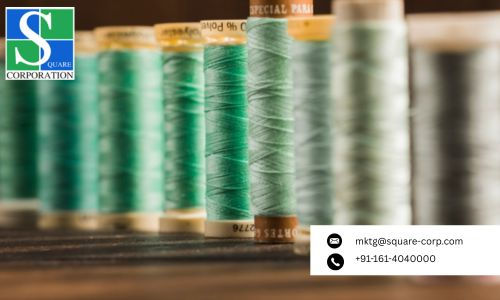How Textile Manufacturers Can Reduce Water Waste in Production
- squarecorpyarnfabr
- May 5
- 2 min read
Updated: Jun 13

The textile industry employs a vast quantity of water in its various production processes; hence it is a precious commodity. The company requires substantial amounts of water for anything from cotton and other raw material cultivation to the dyeing and finishing of textiles. It takes thousands of gallons of water to wash and dye one garment with conventional techniques. Especially in regions where water scarcity is already a problem, this excessive usage of water has negative impacts on the environment. Demand for sustainable fashion practices is increasing as shoppers become increasingly aware of the environment. Thus, the India textile manufacturing industry finds ways to overcome the situation.
Reduction of water loss in textile production is an imperative step towards making it sustainable. Not only does it help the earth, but in many cases, it can also be economical. Here is a comprehensive handbook on how textile producers can realistically reduce water waste in their productions.
Various Textile Manufactures Can Reduce Water Waste
Invest in water-efficient dyeing technologies
Old-fashioned dyeing practices use vast amounts of water. But new techniques are changing this. For example, low-liquor ratio dyeing equipment saves vast amounts of water. Supercritical CO₂ dyeing doesn't use any water at all, and digital inkjet printing onto textiles requires very little water, particularly for patterning. Such new approaches are opening the door to a cleaner future in dyeing. If you are into exports to fabric suppliers in India, then you should be well aware of the fact.
Switch to eco-friendly chemicals and dyes
Choose bright reactive or natural dyes that not only respect the environment but also require less rinsing. Use biodegradable and low-salt chemical substitutes to reduce significantly contamination levels and simplify the process of treating water. This considerate method not only improves sustainability but also leads to a healthier environment.
Maintain equipment regularly
Faulty valves, old nozzles, and poor washing systems cause significant wastage of water, improving an imminent necessity. It is important to carefully calibrate every piece of machinery and replace it with the newest improvements at regular intervals to improve efficiency and minimize loss of resources. Proper maintenance to keep equipment in its best working condition can considerably conserve waste and encourage environmentally friendly habits.
Optimize fabric pre-treatment
Leverage the potential of enzymatic desiring and state-of-the-art plasma treatments to prepare the fabrics, essentially minimizing their water footprint carefully. Optimize batch sizes to effectively cap the number of rinse cycles, thus improving operating efficiency and saving precious resources in the process.
These are some of the ways through which textile manufacturers can reduce water wastage in production.




Comments